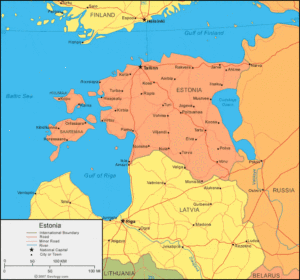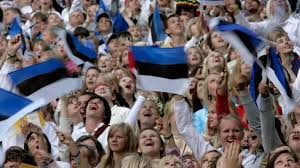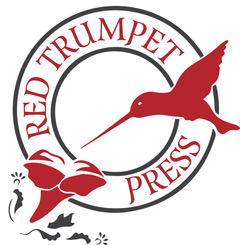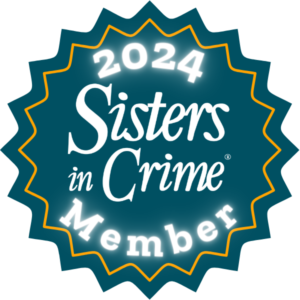Part Three – Estonia: A Captive People Sings its Way to Freedom
Estonia is the smallest of the Baltic countries. It’s about one third the size of New York but has less than seven percent of that state’s population—talk about wide open spaces! So why would such a small country in both size and population be of interest to any larger foreign power?

image via geology.com
The answer lies in one word (or is it three?): Location, location, location. Estonia sits on the Gulf of Finland and is in fact just a two-hour ferry ride from Helsinki. That, by the way, is why the Estonian language is so close to Finnish, a non-Indo-European language, which means even the Estonians’ Baltic neighbors have trouble understanding them!
For thousands of years, Estonian farmers and fishermen lived peacefully and prospered … until the 13th century. From the Middle Ages on, Estonia’s access to the sea made it extremely valuable for power players including Denmark, Germany, Sweden, Poland, and Russia—all of whom wanted to control the land in order to facilitate trade between East and West.

soviet poster image courtesy KUMU (Art Museum of Estonia)
Picture trying to live your life with your community in near-constant turmoil, as if rival gangs had decided your neighborhood was the place to fight to the death. You have nothing to do with either side, but the sabers, bullets, and bombs fall on your homes, businesses, and loved ones just the same.

image courtesy KUMU (Art Museum of Estonia)
During the various turf wars, Estonians suffered terribly, first as serfs, and later as citizens living under foreign occupation, one of the last rulers being Tsarist Russia. As with Lithuania and Latvia, Estonia took advantage of the chaos surrounding Russia’s 1917 Bolshevik revolution to declare its independence in 1920. Unfortunately, it lasted only twenty years; in 1940 the Soviets reclaimed the land. They were so cruel that Estonians actually fared better when the Third Reich took over in 1941; it helped that the leader the Nazis put in charge of the country had been born in the capital city of Tallin. Once Estonia fell back into Soviet hands in 1944, the situation deteriorated. Deportations to Siberia ramped up and reached a climax in March of 1949, when 20,000 citizens were arrested for not obeying the Soviet regime.
Over time, more than a quarter of Estonia’s population was lost through emigration, deportation or death. Russia sought to transform the country by importing ethnic Russians until the outsiders nearly outnumbered the native-born. During this period, all expressions of nationalism, from practicing local customs to flying the Estonian flag, were forbidden. Estonia as a unique country was being systematically wiped out.

image of Estonian Forest Brothers via Reddit.com
Did anyone fight back? Yes. Thousands of armed fighters called the Forest Brotherhood took advantage of Estonia’s thick forests to fight the Soviets as best they could. Eventually, most were killed, arrested or worn down; after Stalin’s death in 1953, many were given amnesty. Amazingly, though, some kept up the good fight, and a few diehards didn’t come out of hiding until Estonia started its push for independence (again) in the 1980’s!
For centuries, Estonia had been ruled by others, but always found ways to hold onto its identity. Under the Soviets, for example, many citizens would fly separate colored banners of blue, black, and white which, when viewed together, denoted the forbidden flag.
But that gesture paled next to their inspired use of song. Estonians love to sing. Their country is among the world’s smallest, yet they have one of the world’s largest repertoires of folk songs. Each year song festivals and singing competitions are held throughout the country; during the Soviet occupation, Estonians were banned from singing certain tunes…until they realized their overlords couldn’t do much about it when enough people began singing their hearts out.
Under Gorbechev’s more tolerant regime, independent-minded groups grew bolder and began expressing their longing for freedom through their

image via theatlantic.com
collective voice. One historic event in what became known as the “Singing Revolution” occurred in September 1988 at the world-renowned Song Festival in Tallin, where thousands of Estonians defiantly sang patriotic songs including “Song of Estonia.” The Soviets didn’t know how to stop so many singers! National pride grew, until even the local Communist Party sided with those who sought self-rule. Thankfully without violent pushback from the Kremlin, Estonia won its independence in 1991.
Today, Estonia is one of the strongest of the emerging eastern European nations. It has blossomed as part of the European Union and is now protected by NATO. Since independence, it has developed successful electronics and telecommunications industries, technology start-ups, and e-commerce; for example, you can thank Estonian engineers for creating the software that runs the communications app Skype.
 Tourism is on the rise, too. Tallin is delightful, with a nearly intact medieval Old Town. Young people walk the cobblestone streets checking their cell phones, and a chic, upbeat atmosphere prevails. As in Latvia and Lithuania, one gets the sense that the people of Estonia are happy at last to show the world who they have always been–a proud, creative and industrious nation.
Tourism is on the rise, too. Tallin is delightful, with a nearly intact medieval Old Town. Young people walk the cobblestone streets checking their cell phones, and a chic, upbeat atmosphere prevails. As in Latvia and Lithuania, one gets the sense that the people of Estonia are happy at last to show the world who they have always been–a proud, creative and industrious nation.



